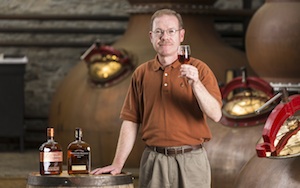For their part, the distillers are being encouraged to argue for state support and a relaxation of local distilling laws on the grounds that craft distilling is a classic small business model capable of creating jobs, raising tax revenue and stimulating local tourism.
Unlike in Europe, where whisky must be matured for a minimum of three years, American whiskey products can be brought to market quickly and with a fraction of the outlay.
What has been surprising has been the speed at which change has taken place – not just reflected by the burgeoning number of small distillers but also by how quickly some of them have expanded in to sizeable business, and how, in response, the established producers have ratcheted up their businesses.
Indeed, while most of the new distillers are content to limit themselves to their locality and to sell through a handful of bars and restaurants a number – perhaps up to 50 – are more ambitious and are intent to compete with the bigger players and to market their whiskey overseas.
For their part, the established Tennessee and Kentucky distilleries have been remarkably fleet-footed in response. Kentucky in particular is a building site as distilleries across the state expand their still rooms, add state of the art tourist facilities and build new storage warehouses.
Surge in demand
Just as they are in Scotland, producers are determined to make whiskey hay while the sun is shining. And, with scotch hogging all the limelight in Europe, the bourbon producers are turning to other markets where there has been a huge surge in demand.
“We have a number of new expressions either already out in the market place, such as Double Oaked, or set to be released soon. In some cases they’re not going to the UK until 2017 or even later,” says Chris Morris, master distiller for Woodford Reserve. “We are selling an increasing amount of bourbon in Canada, Australia, and China, and we’re not the only ones.”
American whiskey is benefiting from what could be described as the perfect storm. A world trend towards quality spirits – and for drinking less but better – the fashion for cocktails, the success of quality American drama such as Mad Men and Boardwalk Empire and a demand for everything to have proven provenance and heritage have all conspired to make for a perfect American whiskey environment.
Even the one obstacle to its success – its reputation as a blue-collar, bottom-shelf product normally without an age statement competing in a world where age and premiumisation are taken as a given – has been turned on its head.
Smart packaging, an emphasis on the high-quality production methods employed in the making of bourbon, the marketing of bourbon’s rich history, a renewed emphasis on tourism and premium visiting experiences, and a new wave of smart boutique hotels and restaurants both serving bourbon and using it as a cooking ingredient, have all reinvented the drink as a premium one.
The transformation has been miraculous. As recently as 10 years ago the Kentucky Bureau, responsible for the state’s tourism, barely muttered a word about its bourbon heritage. Today whiskey ranks alongside horse racing as the state’s main promotional tool – a fact reflected recently by the public announcement that a multi-million dollar bourbon ‘Disneyworld’ was to be built in downtown Louisville for next year.




